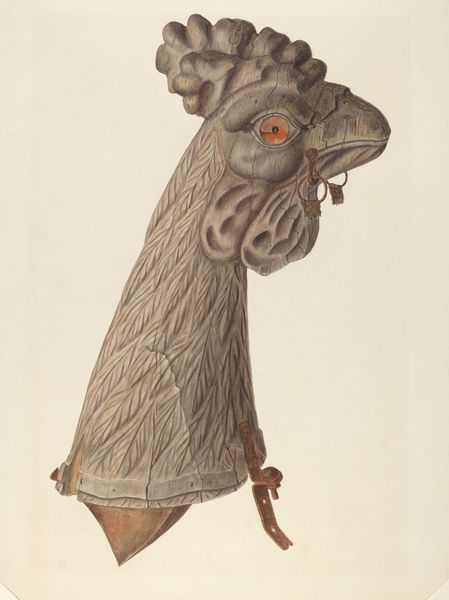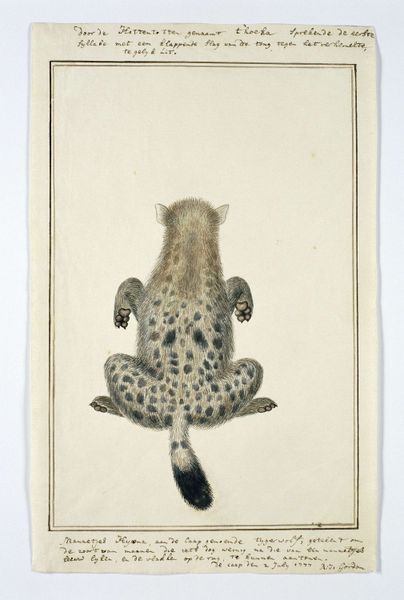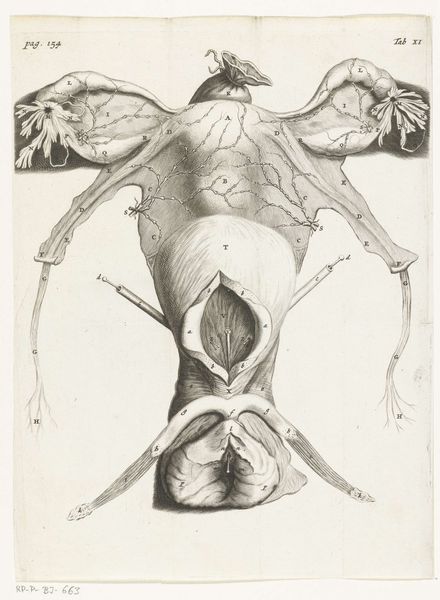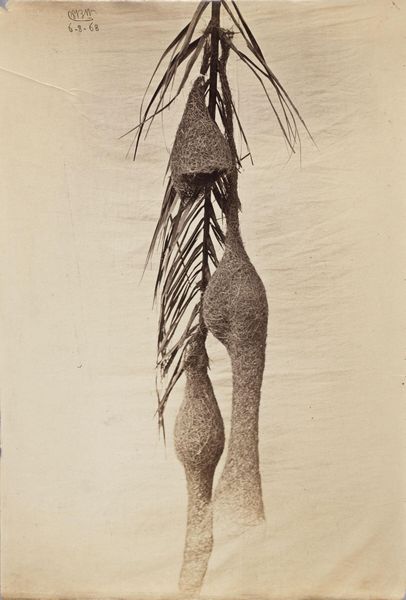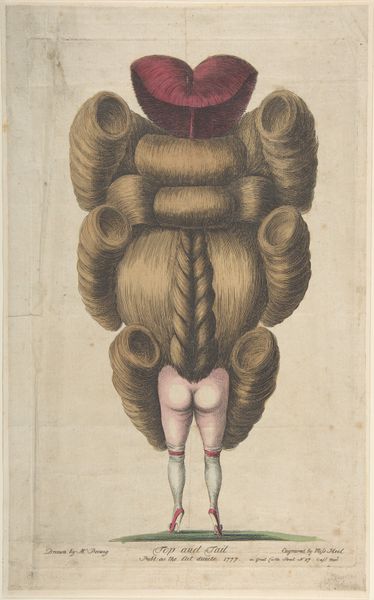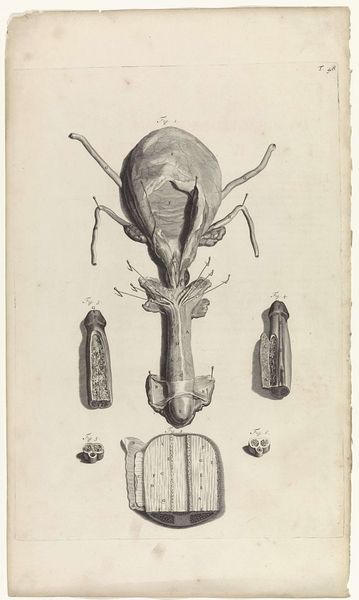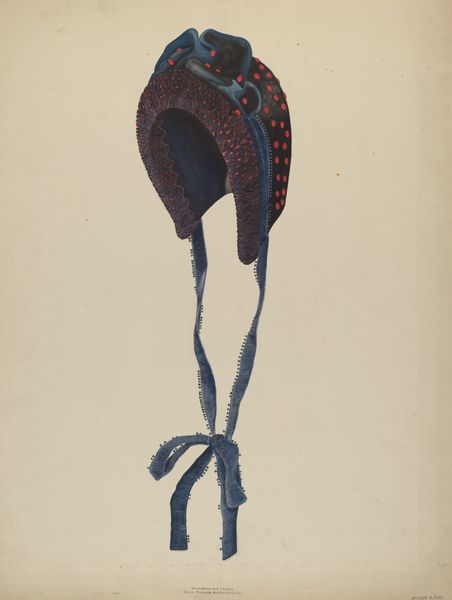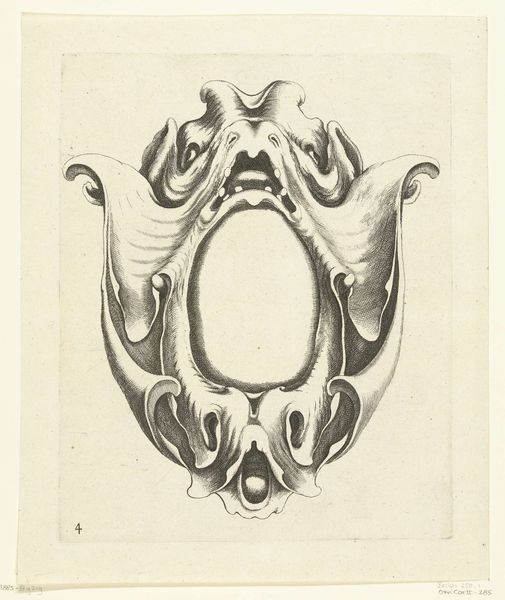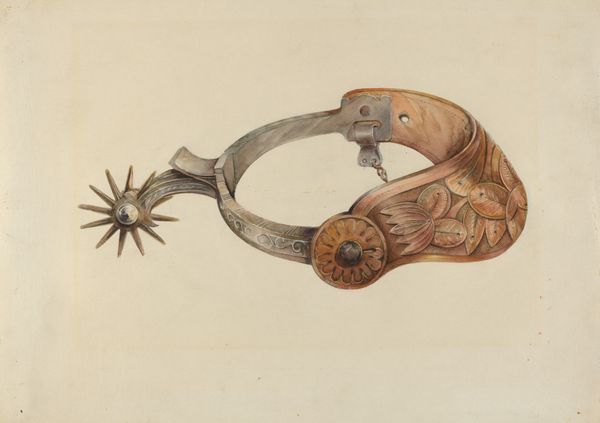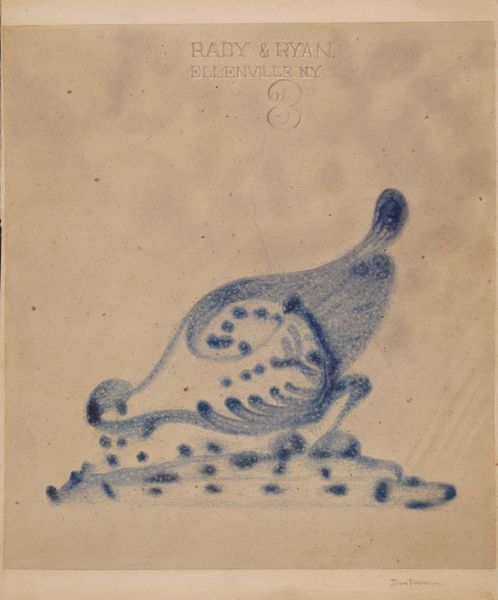
drawing, watercolor, ink, pencil
#
drawing
#
watercolor
#
ink
#
coloured pencil
#
pencil
#
watercolour illustration
#
history-painting
#
naturalism
Dimensions: height 660 mm, width 480 mm, height 410 mm, width 283 mm
Copyright: Rijks Museum: Open Domain
Curator: Good morning. Today we'll be looking at "Crocuta crocuta (Spotted hyena)," a drawing rendered in ink, watercolor, and pencil, possibly dating back to 1777, by Robert Jacob Gordon. Editor: Well, my initial impression is…unsettling. The composition is strikingly symmetrical, and that's definitely adding to an… almost grotesque feeling. Curator: Grotesque? I'd argue it's a fairly meticulous, naturalist depiction. Consider the detailed rendering of the hyena’s spotted coat, and the delicate application of watercolor, creating subtle variations in tone and texture. The very medium contributes to the scientific purpose of such illustrations. Editor: But that’s precisely what I find so strange. It's striving for objectivity, yet it reduces the animal to, essentially, its anatomy. Look at how graphically the reproductive organs are displayed! How would Gordon’s scientific work affect society’s existing prejudices of this animal? It seems deliberately detached, almost clinical, wouldn't you say? Curator: Clinical perhaps, but let's not disregard the context. Naturalist depictions were crucial for scientific documentation at the time. Gordon was not only rendering the form, but also attempting to categorize and understand the natural world. Notice the formal qualities of the image are arranged to enhance visual access, almost like a scientific diagram. The composition is less about art and more about taxonomy. Editor: Even so, the work’s institutional history is inseparable from colonial history, as the work implies a cultural system as it observes. One must ask what the relationship is between the observed and the observer and if Gordon fully escapes cultural biases in depicting African animals with such "clinical" objectivity. This image isn't just an isolated attempt at scientific observation, but a testament to its complex place in the narrative of the period. Curator: True. These depictions have social and scientific context, however, my interest rests primarily with the execution and inherent value of these illustrations, and not how it fits into various power structures. The use of line, the careful washes, they create an undeniable visual experience beyond mere record-keeping. Editor: Well, considering both elements makes experiencing art more worthwhile, I think. This approach enables us to see historical depictions and acknowledge that they contain not only form, but culture. Curator: An interesting thought that brings even more relevance to appreciating this work. Thank you for your reflections.
Comments
No comments
Be the first to comment and join the conversation on the ultimate creative platform.
